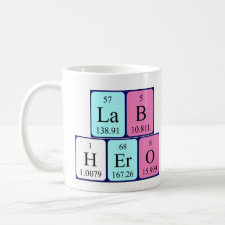
Authors: Chen SH, Frank CW
Article Title: Fluorescence probe studies of self-assembled monolayer films.
Publication date: 1991
Journal: Langmuir
Volume: 7
Issue: (8)
Page numbers: 1719-1726.
DOI: 10.1021/la00056a025
Abstract: Fluorescence probe techniques were used to study the effects of incorporating "guest molecules" into organized organic self- assembled monolayers formed by spontaneous adsorption from solutions. Self-assembled n-alkanoic acid monolayers containing pyrene fluorescence probes were the model systems studied. The fluorescence emission intensity ratio between the first and the third highest energy (frequency) emission peaks, I1/I3, has been shown to reflect the polarity of the medium surrounding the pyrene group. For systems in which the host acid chains are longer than the probe chains by six or more CH2 Chain segments, i.e., when the pyrene groups are completely "buried" inside the packed hydrocarbon chains, the low I1/I3 values obtained indicate a nonpolar environment. When host acids of shorter chain lengths are used, the pyrene groups become less buried in the film, and a more polar environment is indicated by the increased I1/I3 values. For films with host acids shorter than C-12, however, I1/I3 decreases, perhaps indicating some disordering in the monolayers, analogous to similar results for Langmuir-Blodgett films. Fluorescence quenching experiments were performed on the pyrene-doped monolayers with aqueous solutions of nitromethane, CH3NO2, which quenches the pyrene fluorescence via a dynamic process. The apparent quenching constant K(D) showed a similar trend as the I1/I3 results. The apparent diffusivity of CH3NO2 in the vicinity of the pyrene groups was determined after accounting for the partitioning of CH3NO2 between the aqueous and the film phases and the fluorescence lifetime reduction of the Py-C-16 and Py-C-12 probes anchored on aluminum substrates. As the host acid chain becomes longer than the probe (i.e., the pyrene group is more deeply embedded inside the film), the effective diffusivity is decreased. For the case in which the pyrene group is totally buried inside the monolayer, the effective diffusivity is decreased by about 50% relative to the fully exposed case



Join the Society for Molecular Imprinting

New items RSS feed
Sign-up for e-mail updates:
Choose between receiving an occasional newsletter or more frequent e-mail alerts.
Click here to go to the sign-up page.
Is your name elemental or peptidic? Enter your name and find out by clicking either of the buttons below!
Other products you may like:
 MIPdatabase
MIPdatabase









